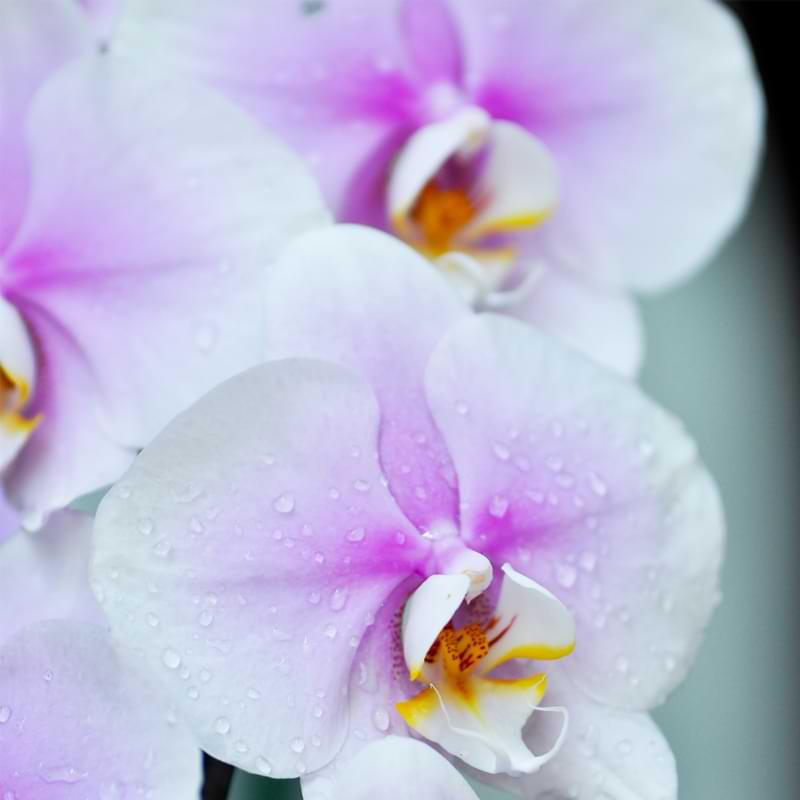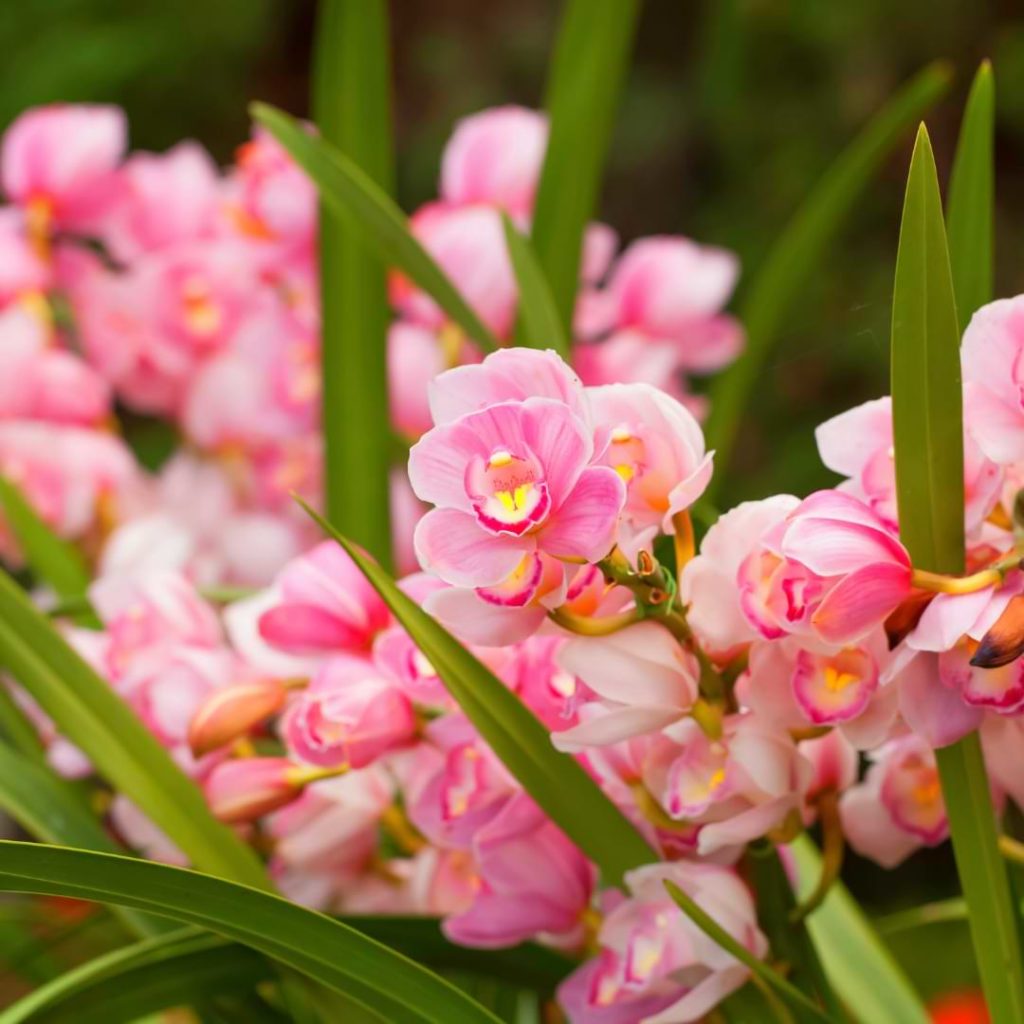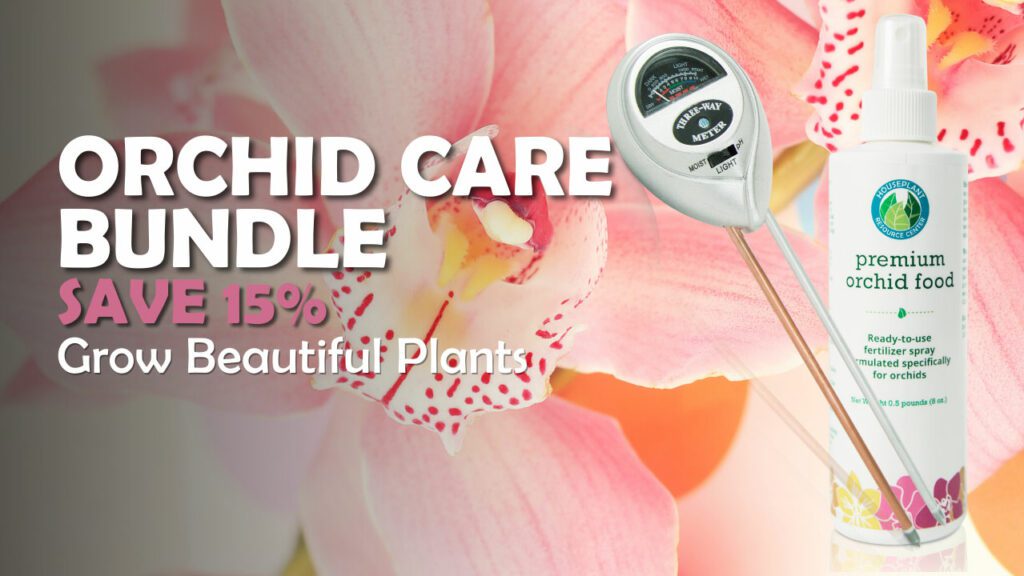Dendro phalaenopsis (also known as den-phal) is among the most popular household orchids. They are great for beginners because they are easy to care for. There are a few guidelines to follow that we will discuss, but for an orchid, den-phals are very forgiving. Just give them the right light, temperature, and water, and you’ll be rewarded with vibrant blooms.
How to Grow Dendro Phalaenopsis
Den-phals are hardy, but they do have a few particular needs. Let’s take a look at what they need to thrive.
Light
Dendro phalaenopsis needs bright light, but the light needs to be indirect. They do best in south-facing windows; however, they can also be grown in east-facing or west-facing windows as long as the window is shaded in the morning or afternoon, respectively.
During the summer, you might want to move these orchids farther away from the window or use a sheer curtain to prevent the leaves from burning. If you notice leaves turning yellow-green or red, this is a sign of too much light.
If you notice your orchid’s leaves turning dark green, then the plant may not be receiving enough sunlight, and you can adjust accordingly.
Temperature & Humidity
Because dendro phalaenopsis are orchids native to Northern Australia and Southeast Asia, they do best with temperatures and humidity that recreate this environment.
As far as temperature goes, normal household temperatures are usually correct for these orchids. They prefer a temperature of between 65 and 85 degrees Fahrenheit during the day. For optimal flowering, dendro phalaenopsis orchids need a temperature drop of about 10 degrees at night.
However, the humidity in most households does not match humidity levels in the native environment. These orchids prefer 50% to 60% humidity. The ideal humidity level for people is between 30% to 50%.
If the humidity level in your house is significantly below what orchids require, you can use a humidifier to help raise humidity levels. This is popular during the winter in some areas as humidity levels are often lower then.
If you only want to increase humidity directly around your plants, then create a humidity tray. Place pebbles in a shallow tray and fill the tray with water. Make sure that pebbles raise your pot above the water level because you do not want the plant’s roots to become oversaturated and rot.
Some people choose to mist their orchids to maintain humidity. However, as there is a risk of rot and fungus, it’s not recommended for beginners. Should you choose to mist your plants, avoid doing so during the afternoon or evening to reduce the risk of damage.
How Often to Water Dendro Phalaenopsis
Unfortunately, there isn’t a simple answer to how often to water dendro phalaenopsis. The proper amount of water depends on multiple factors, such as season and soil composition.
A rough guideline is to plan to water once a week during the winter and twice a week during the summer. However, looking at the soil is the best way to determine whether or not you need to water. Stick your finger an inch down into the soil; if it’s dry, it’s probably time to water.
You can let the soil almost dry out between waterings, but you should not let it dry out completely.
Water orchids during the morning so that their leaves have a chance to dry out during the day.
Orchid Soil
You might be wondering whether orchids like dendro phalaenopsis need a special type of soil. Orchids need a specific mix in order to thrive. When you first buy an orchid, you don’t need to worry too much about the soil as it will likely already be potted in suitable soil.
Once you are ready to move your orchid to a bigger pot, then you will need a mix designed for orchids. You can choose to purchase a commercial mix to keep things simple. These mixes are designed to allow for proper root aeration, retain needed water and nutrients, and promote root health.
Once you feel more adventurous and want to create your own potting mix, you can create a bark mix for your orchids. Bark mixes contain tree bark plus a material intended to retain water.
For the tree bark, select a coarse material that will allow for some airflow to the roots. Ground bark from coastal redwoods or Douglas fir is a good option.
For the water-retaining material, select a medium like peat moss, perlite, or coconut husk chips.
Combine the 5 parts tree bark with 1 part water-retaining material to create a custom growing medium for your orchids.
The tree bark will eventually begin to break down (regardless of whether you are using a commercial mix or a homemade mix). When this happens, it’s time to repot your orchid into fresh soil.
Fertilizer
Here’s the deal. You need to fertilize houseplants like orchids that will remain in a small pot for a long period of time with the same soil. Potted orchids don’t have access to the number of nutrients that they would get in the soil in their native environments.
You can fertilize orchids using a general-purpose liquid balanced fertilizer (like 20-20-20) diluted at ¼ to ½ strength once a week or once every two weeks during the growing season from spring until fall. A balanced fertilizer just means that the levels of nitrogen, phosphorus, and potassium (known as the NPK ratio) are the same for each element.
I’ll be honest, applying fertilizer to houseplants (or any plants for that matter) makes me nervous because of the risk of burning the roots if applied incorrectly. For this reason, I suggest that you dilute fertilizer even more than the directions on the package and apply sparingly.
Another option is to choose a gentle fertilizer with a very low NPK ratio. You can purchase formulas like Premium Orchid Food with an NPK ratio of .2-.2-.2 that are safe to use every time you water.

Dendro Phalaenopsis Flowers
If you are looking for beautiful orchid blooms with minimal effort compared to most other types of orchids, dendro phalaenopsis is about to be your best friend. This variety is frequently added to collections due to its prolific vivid flowers.
You can expect 5 flower spikes from young den-phals, but that number expands up to 20 as the plant matures. Individual flowers can last anywhere from 6 to 8 weeks.
Will my dendro phalaenopsis rebloom?
Part of the reason that dendro phalaenopsis are so well-loved is that they are among the easiest orchids to get to rebloom. In its natural environment, the den-phal is an evergreen that reblooms three times a year. Indoors, this orchid most commonly reblooms two times a year.
Unlike other orchids, there are not any true tricks or tips to get den-phal to rebloom because it will usually rebloom without too much special care. As long as you keep your care mostly consistent throughout the year, you should see reblooming from these orchids.
How do I care for my dendrobium phalaenopsis after flowering?
Dendrobium phalaenopsis flowers fall out of the stem when they have finished flowering, so don’t be alarmed when this happens. In 8 to 12 months, the plant will create another stem on a new shoot.
Once flowering is finished, you can cut off the sprays where they meet the canes. New flower spikes grow on new stems rather than on the cane itself. Continue constantly watering and fertilizing after flowering.
How to Repot Dendro Phalaenopsis
Den-phal does not need to be repotted too often. In fact, unnecessary repotting can stress out these orchids and slow down growth.
Repot only when the orchid has begun to outgrow the pot or when the bark mix begins to break down and conditions in the pot get too soggy for dendro phalaenopsis. Expect to repot once every two or three years.
When it’s time to repot, wait until after a blooming cycle has been completed if possible.
First, trim off any spikes. Carefully take the orchid out of its current pot. Trim off any roots that show signs of rot (these will look brown or feel soft). If there is no rot, place the orchid in a pot one or two inches larger than the previous pot. If you had to cut off roots, then reuse the current pot or one with the same dimensions; otherwise, the new pot may be too large and inhibit proper growth. Finally, add new orchid potting mix to the pot.
Dendrobium Phalaenopsis Propagation
If you just can’t get enough dendrobium phalaenopsis in your orchid collection, you can easily propagate more. Most orchids, including den-phals, have a rhizome (a kind of horizontal stem) under the soil line. To propagate, you just need to cut away part of this rhizome with a few roots and canes attached. Then place this cutting into a wet growing medium until new growth begins.
Orchids also sometimes produce clones known as keikis. You can encourage these clones by placing keiki paste on growth nodes. Or you can watch for signs of naturally occurring keikis, which appear when orchids are under stress or when they are in a hotter environment than usual.
Be aware that keiki growth tends to delay flowering. If you want to propagate keikis, wait until there are a few inches of root growth before taking the clone off the mother plant.
Dendro Phalaenopsis Species
Despite the name, dendro phalaenopsis is a dendrobium, not a phalaenopsis. This slightly confusing moniker comes from the fact that den-phal flowers resemble phalaenopsis flowers.
Den-phals are a favorite in the orchid world because they are less fussy than other types of orchids. Den-phals can handle some sun and a wider range of temperatures.
Dendro Phalaenopsis Blue Happiness
Blue Happiness is a sought-after variety of dendro phalaenopsis because it is one of the few “blue” orchids. It is an indigo (the color between blue and violet in the spectrum) orchid. Blue Happiness produces flowers around 2 inches in diameter.
Dendrobium Phalaenopsis Keiki
A dendrobium phalaenopsis keiki is a baby plant produced from a mature plant. Keiki is a Hawaiin word for “baby” that refers to a clone produced by a mother plant in the air on one of its canes. You can leave it on the mother plant and allow it to grow there, or you can remove it after it has time to develop some and use it to start a new plant.
Common Problems
Den-phals live up to their reputation as great beginner plants when it comes to problems. Just like with all orchids, it is important to water correctly and to watch out for broken-down potting mix creating a soggy environment.
The only major pest den-phals are likely to have is spider mites. Check the underside of the leaves for evidence of these mites in the early summer.
Dendrobium Phalaenopsis Care FAQ
FAQ: Why does my dendro phalaenopsis have yellow leaves?
Yellow leaves on a den-phal may or may not be cause for alarm. Yellowing can occur for several different reasons.
Older leaves turn yellow before they drop off. If only one or two leaves are yellow, then it’s probably part of this natural process.
Most commonly yellow leaves are a sign of overwatering or too much light. Try adjusting these two areas first.
Sometimes yellowing is caused by a lack of nutrients. If you are regularly applying fertilizer, you can rule out this issue. If you’ve forgotten to fertilize, then start now.
Finally, yellow leaves can be a sign of a fungal or bacterial infection. Although you cannot reverse the damage, you can apply surface treatments to stop the yellowing from spreading. Rule out the more common causes before moving on to this step.
FAQ: How do you revive a dendrobium orchid?
Dendro phalaenopsis orchids are hardy so you have a fair chance of reviving this orchid if it’s suffered damage from underwatering. (We won’t tell anyone that you forgot to water it for so long.)
Remove your crispy orchid from its pot and wash it with water. Remove any roots and leaves that come off easily. Using scissors or clippers, take off anything that isn’t green or firm. Orchid roots may be either light green or light brown. If they are dark brown or soft, remove them.
Now you can repot in new soil. Water immediately after potting, but don’t begin overwatering afterward. Water only when the soil is nearly dry. Watch for signs of new growth throughout the next month.
Join Our Orchid Care Facebook Community
In our Facebook group of orchid lovers, we’re dedicated to creating a rich and engaging environment where plant lovers can come together and share tips, tricks, and experiences.
If you’re an orchid lover, come join our Facebook community! We can’t wait to celebrate your successes and help you troubleshoot your care routine.
For continued success, you can explore our other articles or visit our online shop for plant care products that are sure to keep your plants boasting rich green leaves and big, bountiful blooms year-round.



